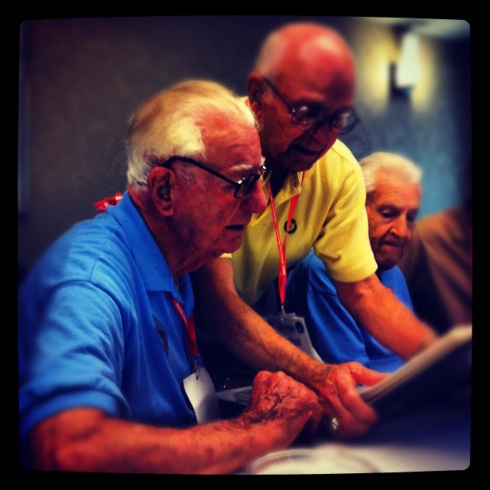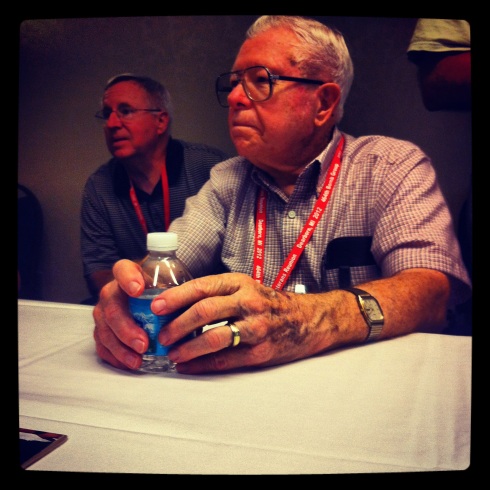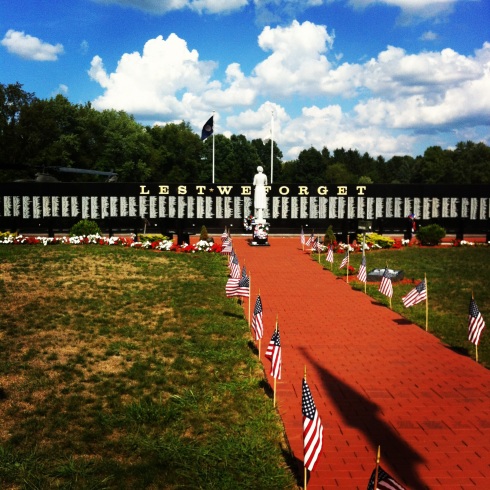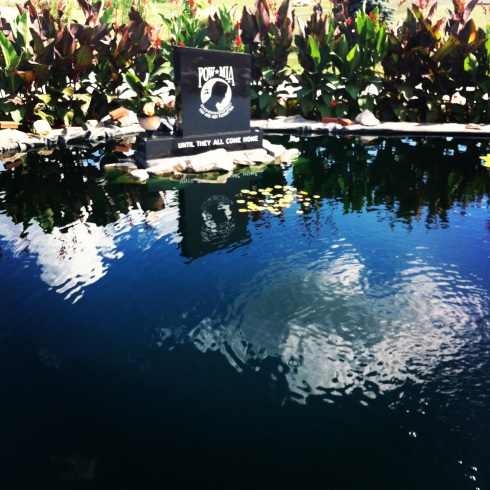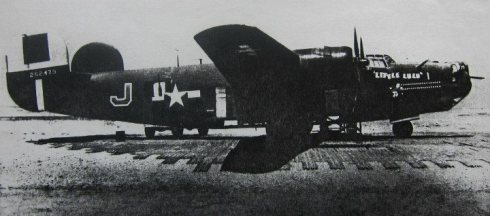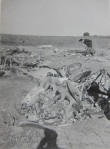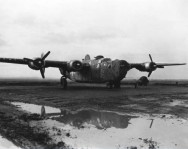
(Reported by: Rick Pollo – Web Intern WKBN Youngstown)
On Tuesday, the American Legion Post 290 in Columbiana held a very special ceremony honoring a World War II veteran who waited 67 years for medals he earned in combat.
Rep. Bill Johnson, R-Marietta, who also is a former U.S. Air Force cadet, presented Carl E. Will, 88, with several medals of honor that Will never received. The Congressman also presented him with a flag that was flown over the nation’s capital in his honor.
During the war, Will served as a waistgunner on a B-24 Liberator called Little Lulu. He was part of the 464th Bombardment Group 776th Squadron in Pantanella, Italy.
Waistgunners had the job of operating the anti-aircraft guns stationed at the side openings of the plane. They often had to deal with temperatures of minus 40 degrees within the plane.
Will flew more than 50 missions in his B-24, enduring heavy flak during many of his bombing missions.
Will received the Purple Heart for being injured by a piece of flak on July 6, 1944, during a combat mission. After flying 50 missions, he was reassigned to fly the Hump, the supply route over the Himalayas. He served in both the European and Pacific campaigns during the war.

He earned seven medals and several badges for his service, including the Air Force Distinguished Service Medal, the Purple Heart Medal, the Air Medal, American Campaign Medal, Asiatic Pacific Campaign Medal, European-Africa-Middle Eastern Campaign Medal and the World War II Victory Medal. But he never received any awards other than his Purple Heart.
He was honorably discharged in 1945.
In 1973, there was a fire in the National Personnel Records Center in St. Louis that destroyed about 80 percent of the documentation of any Army or Air Force member who served during WWII. Because of this, Will was never able to receive any of his medals or even have documentation that he ever served his country.
The only proof of his service was from the discharge papers he had on him.
Several attempts were made to retrieve his records from the NPRC, but each time they said that there were no records listed for the veteran.
“My interest in his history inspired me to dig deeper,” said Will’s grandson, Matt Skillman, who organized Tuesday’s ceremony. “Through social media, I met many people who recommended that I contact my local congressman. I contacted Bill Johnson and he was very willing to contact the NPRC on my behalf. We got a letter back saying the same thing, that the fire had wiped out my grandfather’s records. I did, however, get a form that listed all of the awards that he was entitled to.”
“I just really wanted to make it a point that he gets these medals and his paperwork saying that he had served during his lifetime. It just really meant a lot to the family,” Skillman said.
Johnson, who helped Will get his medals, said he was very happy and honored to be able to present Will with the long-overdue recognition.

“We had to go through the process of reconstructing his service records and going back through some archives and finding the information so that Carl could get the medals that he so much deserved,” Johnson said.
Will had no knowledge of what was to unfold prior to the ceremony.
“He has no idea that this is happening, so it’s going to be a bit of a surprise,” said Johnson. “He does not know that I’m here. He doesn’t know that we have this great display of his military history in what’s called a shadowbox. It’s a pretty awesome trophy that he can look at and remember the sacrifice that he made.”
During his speech, Johnson expressed his personal gratitude for the sacrifice Will gave for his country.
“Your service during World War II was both brave and selfless. You should be justifiably proud of your accomplishment. Your dedication exemplifies the very core values of the United States Air Force: Integrity first, service before self, and excellence in all that you do,” said Johnson.
Will stood speechless with tears of joy rolling down his face as he proudly accepted his awards.
“It’s absolutely priceless to see the look on his face, to see how happy he is,” Skillman said.
He also was presented a certificate honoring his 50 years of membership with the American Legion by Post 290 Commander Nick Simpson.
“Unbelievable, I tell you. I can’t understand it. They are all a great bunch of people,” Will said.
Video here: http://www.wkbn.com/content/news/local/story/WWII-Veteran-Gets-Medals-67-Years-After-Service/szLZ9GUJWEKmn8ZGiXLK8Q.cspx






